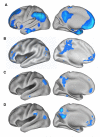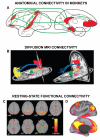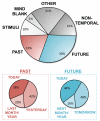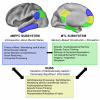The brain's default network and its adaptive role in internal mentation
- PMID: 21677128
- PMCID: PMC3553600
- DOI: 10.1177/1073858411403316
The brain's default network and its adaptive role in internal mentation
Abstract
During the many idle moments that comprise daily life, the human brain increases its activity across a set of midline and lateral cortical brain regions known as the "default network." Despite the robustness with which the brain defaults to this pattern of activity, surprisingly little is known about the network's precise anatomical organization and adaptive functions. To provide insight into these questions, this article synthesizes recent literature from structural and functional imaging with a growing behavioral literature on mind wandering. Results characterize the default network as a set of interacting hubs and subsystems that play an important role in "internal mentation"-the introspective and adaptive mental activities in which humans spontaneously and deliberately engage in every day.
Figures







References
-
- Abraham A, Schubotzb RI, von Cramon DY. Thinking about the future versus the past in personal and non-personal contexts. Brain Res. 2008;1233:106–119. - PubMed
-
- Addis DR, Pan L, Vu M-A, Laiser N, Schacter DL. Constructive episodic simulation of the future and the past: Distinct subsystems of a core brain network mediate imagining and remembering. Neuropsychologia. 2009;47:2222–2238. - PubMed
-
- Amodio D, Frith C. Meeting of minds: The medial frontal cortex and social cognition. Nature Rev Neurosci. 2006;7:268–277. - PubMed
-
- Andreasen NC, O’Leary DS, Cizadllo T, Arndt S, Rezai K, Watkins G. Remembering the past: Two facets of episodic memory explored with positron emission tomography. J Am Psychiatry. 1995;152:1576–1585. others. - PubMed
Publication types
MeSH terms
Grants and funding
LinkOut - more resources
Full Text Sources
Medical

